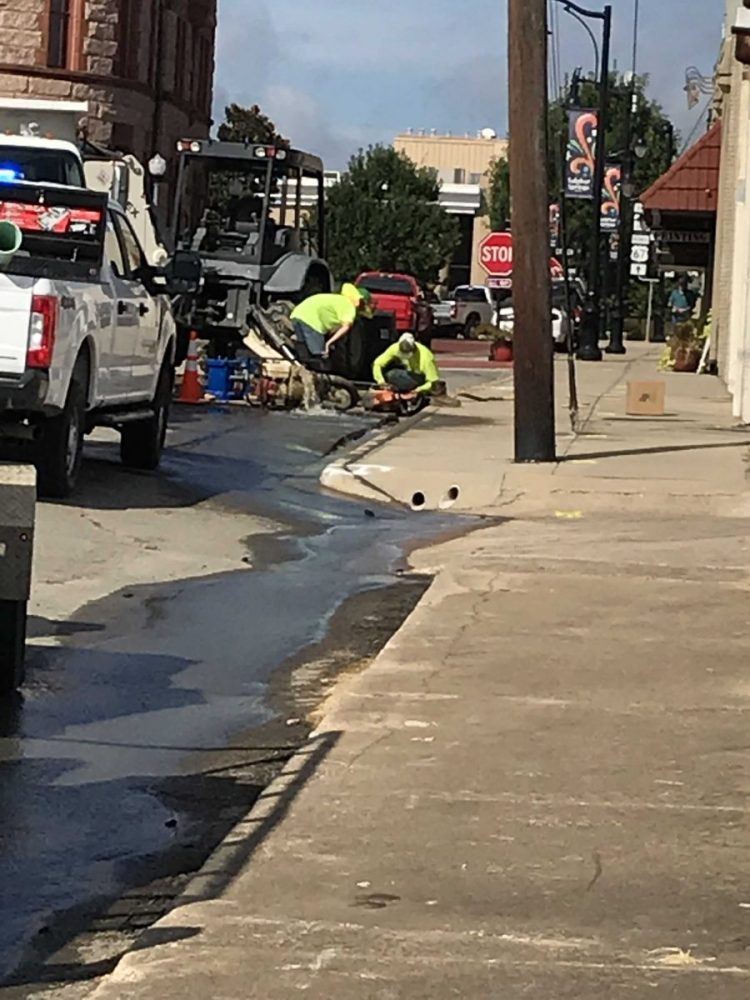City of Sulphur Springs crews have already repaired 22 water breaks this month, the most in a single month since the summer of 2018, and the July is not over yet. That’s still significantly less water main ruptures than in past summers, which city officials say is likely due to a few reasons but July-September will be the true test of the city’s water system.

“There was a day in the summer when we would repair 120-130 ruptured water mains. So we’ve been busy replacing water mains with essentially PVC pipe over the years, which is more flexible and less prone to breaking,” Sulphur Springs City Manager Marc Maxwell told City Council members at their regular July meeting earlier this month.
As drought conditions worsen along with the ever rising triple digit temperatures, typically, water main ruptures increase dramatically as well. What remains to be seen, Maxwell noted July 19, 2022, is just how many breaks will be reported in the current worsening drought conditions — whether they will double to more like 30 or 40 a month or will they be more like 10-20 years ago, when 120 water main ruptures was not uncommon.
To put that into perspective, the most annual water main ruptures KSST was able to figure, based on the monthly city manager’s reports and city council minutes, since 2017 was 160 in 2018, and the most reported by Maxwell for a given month was 28 in August of 2018. In fact, so far, July 2022 is tied with September 2018 and September 2020 for second most during the past 5 years. This could be due to the weather, which over the past few years has been rather moist, with more rainfall than usual.
“Either the numbers we have been seeing for several years are wonderful because we replaced so many water lines or we haven’t experienced a severe drought in some time, or maybe some combination of the two. This is a number that I think is going to be worth watching over the next 90 days to see what happens there,” Maxwell said earlier this month.
Regardless the number, each ruptured main costs the city non only in repairs, but also ear and tear on equipment and time of city personnel who are often pulled away from other tasks to make the repairs, which means less time for routine maintenance of the water infrastructure. It could also potentially mean paying city staff overtime if ruptures occur afterhours, as they often do. While the city budgets for some of these types or repairs, a really dry summer and fall in years meant more ruptures. Time will tell how well the city’s water system holds up to drought compared to the materials used in drier summers past.
Month/Year 2022 2021 2020 2019 2018 2017 2016 2015 January 14 12 7 2 16 14 7 13 February 10 15 7 5 6 3 7 9 March 10 8 3 7 3 6 11 5 April 10 8 3 5 6 7 4 5 May 9 4 10 NA 21 5 2 7 June 12 3 7 13 14 4 3 5 July 22 14 7 14 14 9 16 5 August 12 17 19 28 12 16 23 September 11 22 14 22 12 NA 20 October 12 9 21 18 6 NA 51 November 12 7 5 7 4 NA NA December 8 8 15 11 9 16 5 TOTAL 87 119 107 *93 160 91 *66 *148
as reported in the monthly City Manager’s reports and City Council Minutes
(NA: Information Not Available; *Data missing for 1 or more month)





